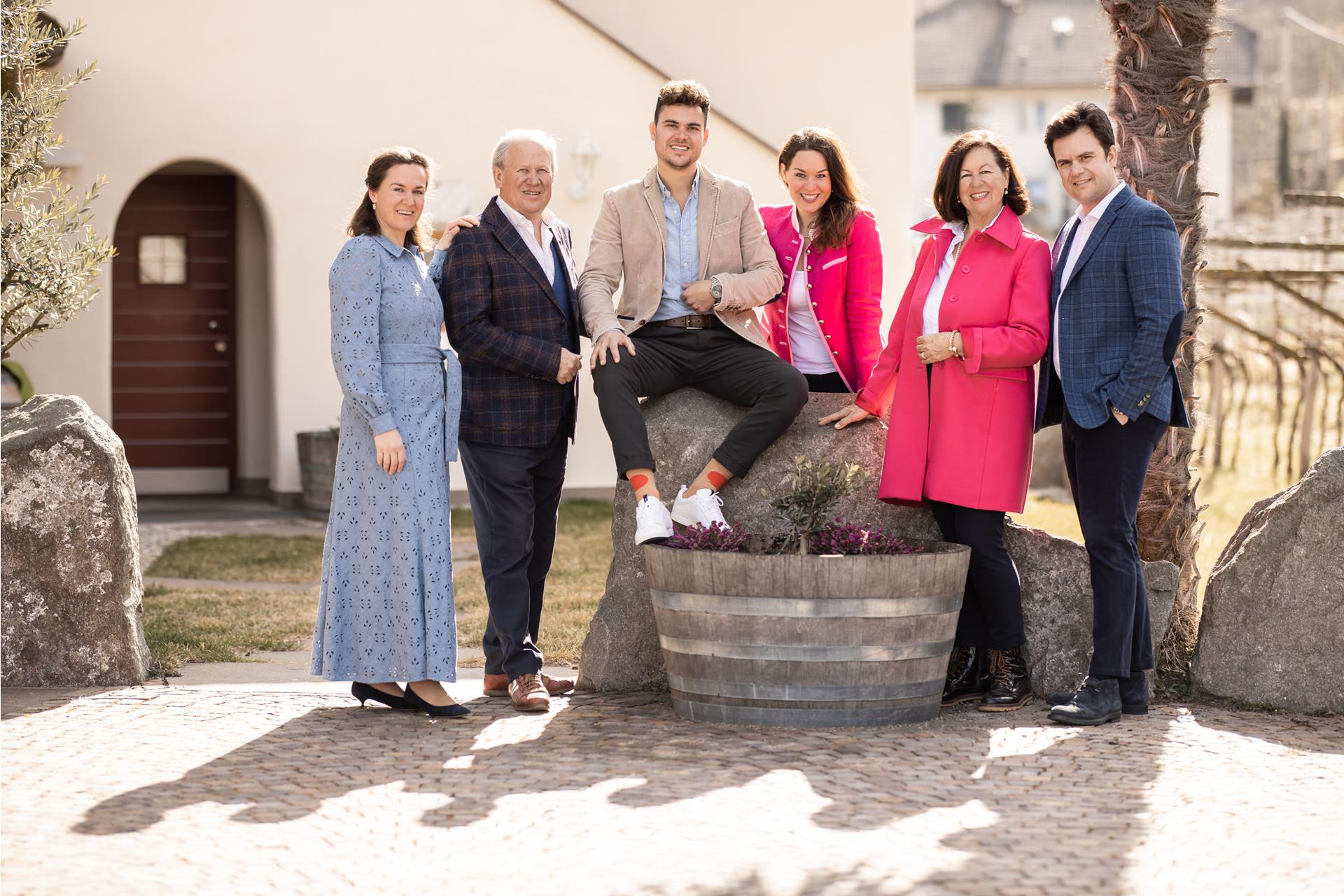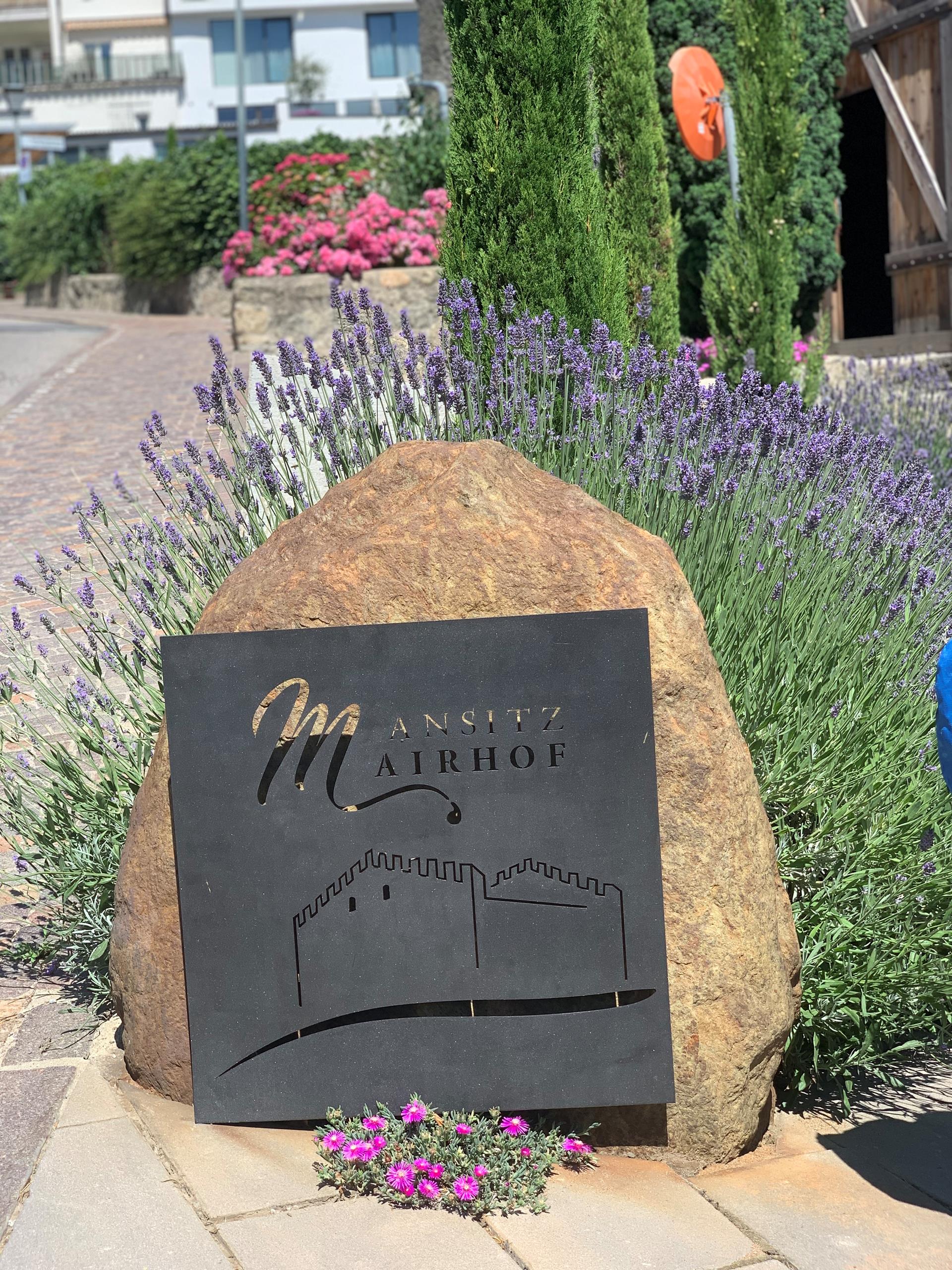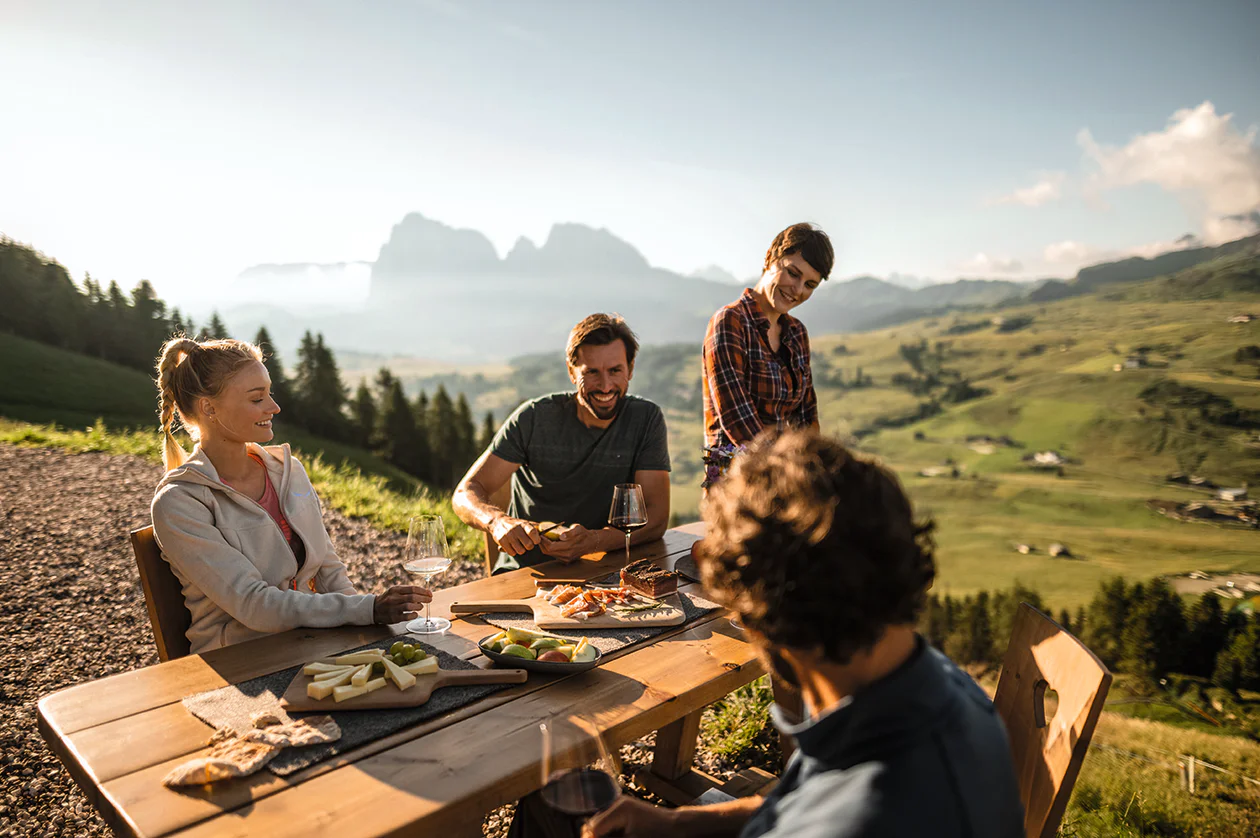We thought so! In Santa Maddalena above Bolzano, it’s easy to pick up two points with the types of grape varieties. After all, the wine which has made the name of the village renowned far beyond the borders of the province consists of around nine tenths Schiava and a small component of Lagrein.
And in its assortment on offer, it goes without saying that the Steidlerhof – located at via Santa Maddalena di Sopra, 1, you will recall – has a classic Santa Maddalena. But the Gasser family also brings other wines to the market. “We make a typical Sauvignon Blanc, for example, a dry Yellow Muscat, a full-bodied Muscaris, and a velvety Lagrein,” explains Rudi Gasser, who runs the Steidlerhof today.
The Gasser family has provided the historical farmhouse with a broad foundation. Growing grapes and making wine are not the only activity. Rather, the Gassers also operate a Buschenschank farmhouse inn and rent out vacation apartments. Both are able to take advantage of the location of the Steidlerhof high above Bolzano and from the view that can be enjoyed here: of the Dolomites, of the sea of houses of the provincial capital, and last but not least of the vineyards of Santa Maddalena.
And you know what’s growing there, right?


































